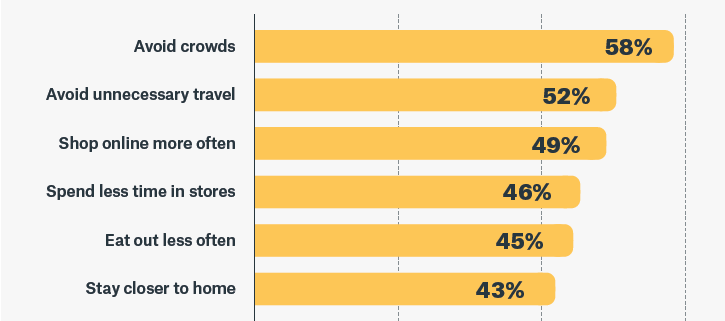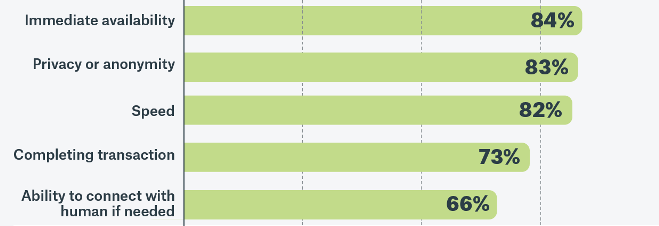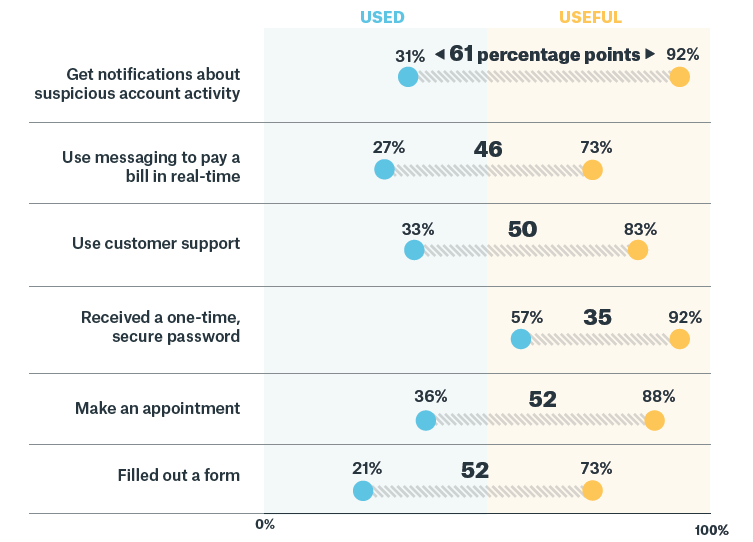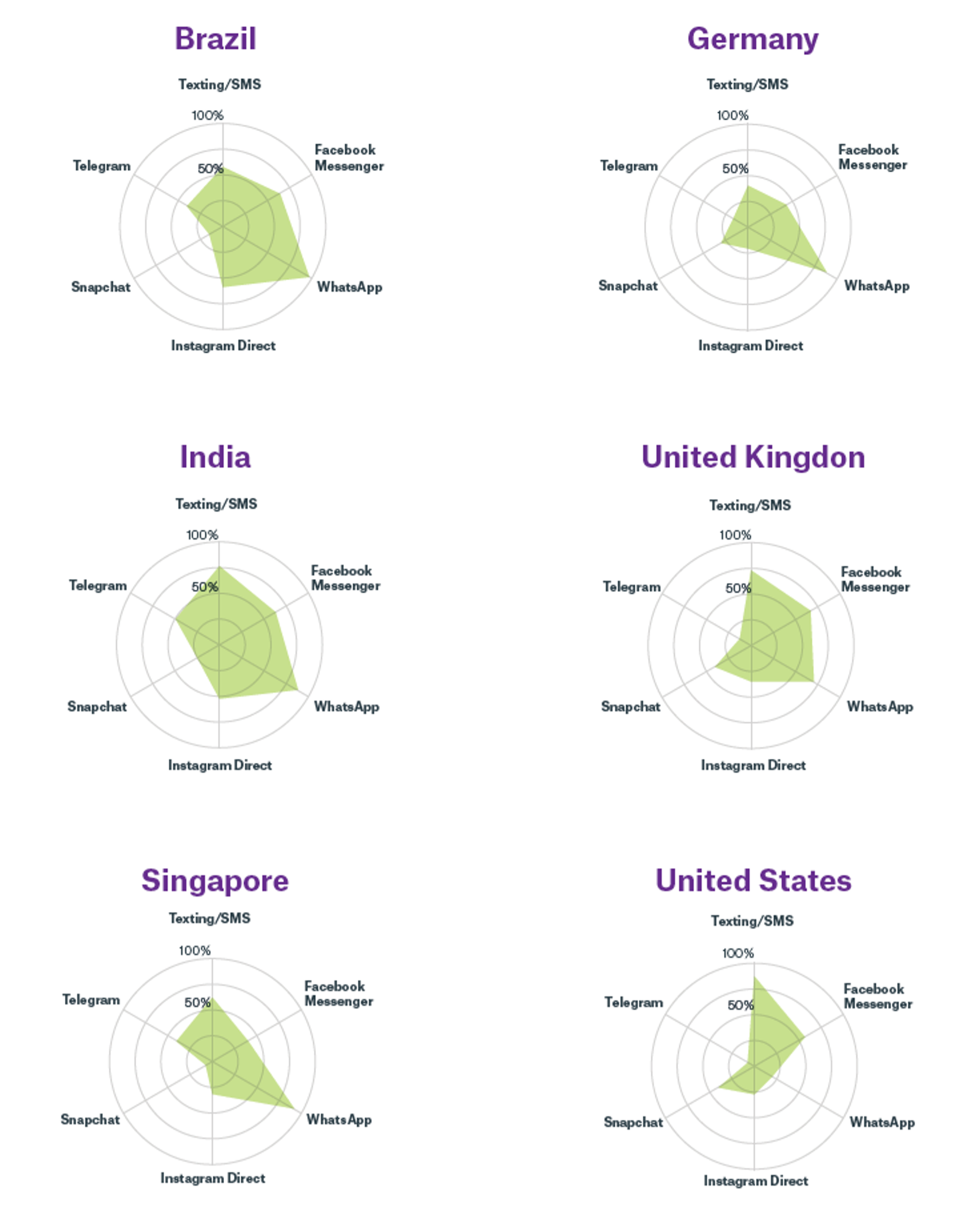Insights, Products
Transforming retail customer experience

Insights, Products

New research from Sinch shows consumers are largely enthusiastic about new forms of engagement with retail brands on mobile — including conversational AI and rich media messaging — yet adoption remains stubbornly low. As retailers approach Black Friday and holiday shopping, how can they drive greater mobile adoption, and will COVID push consumers to adopt in greater numbers?
The Sinch study, which surveyed 2,890 consumers across 14 countries, documents dramatic shifts in customer behavior and analyzes the features and solutions customers want most from retail brands they trust.
The survey asked consumers which of their daily habits would continue to be affected even after the pandemic has passed. Fifty-eight percent said they would continue to avoid crowds, 49% will continue to shop online more often, and 46% will spend less time in stores even after the danger is over. This shift — a dramatic move away from physical interactions and places and toward digital spaces — will profoundly affect retail for many years to come. And it makes it imperative that brands accelerate digital transformation as part of their customer experience management strategies.

These shifts represent a clear opportunity for digital- and mobile-savvy retail brands to improve engagement and loyalty. But will COVID-driven features — like using an app to check-out in store, consulting a chatbot to check inventory before visiting in person, or having virtual or chat-based consultations — persist after COVID is controlled? Whether these behaviors will last depends on the consumer experience of these new formats and features, and whether they find them useful. “Behavior changes are not linear and their stickiness will depend on satisfaction of the new experiences,” say McKinsey researchers.
The 2020 holiday shopping season will be a strength test for many retail brands. As spending ramps up in November and December, and social distancing measures continue, retailers have a chance to stand out from competitors with truly unique mobile experiences — from social shopping and messaging-based customer service to personalized videos and high-value mobile notifications.
One interesting finding: Despite stereotypes about negative interactions with chatbots, consumers are pleased overall with chatbot conversations. Forty-five percent have used chatbots, and of those who use them, approval ratings are high — particularly for their immediacy, privacy, and speed.

Seeing these high approval marks is important because conversational AI is a key driver of efficient, frictionless customer experience on mobile.
The research also examined how shoppers use their phones to interact with businesses, as well as which of these scenarios they find useful. Comparing the two, the study isolates which features show the biggest gap between usage rates and “usefulness” — something Sinch calls the opportunity gap.
For example, 82% say that using messaging-based customer support is useful, but only 33% have used it. Seventy-three percent say paying for something via text/SMS or messaging would be helpful, but just 27% have done this today. These differences (the opportunity gap) are clear opportunities for retail brands to deliver high-value experiences via messaging apps and mobile phones.

Among the biggest opportunities for brands in 2020 is the rich media and personalized messaging space. Just as brands have pivoted to make emails personalized, so too must they consider how to create personalized experiences in messaging. For example, rather than sending out a plain-text discount code to everyone on a list, retail brands can send snapshots of products a customer recently browsed, and offer targeted highly personalized discounts. Even better, send personalized messages that invite conversation and reaction.

Seeking out new ways to engage customers on mobile — and in particular, through the chat stream on text/SMS or messaging apps — is critical as brands navigate digitally empowered customers.
What makes this particularly challenging: Adoption of messaging channels varies widely by country. See below how millennials and Gen Z use messaging channels across the globe. In the US, text/SMS dominates. In Germany, WhatsApp leads the pack. And in India, young people are power users of multiple messaging apps/channels.
Pierluigi Bosco is global CRM lead for Shell, an oil company with 55,000 locations worldwide, many of which include a quick mart or small grocer. Bosco explains, “We need to be sensitive about how we use channels country-by-country. There are cultural differences we have to be aware of. For example, in Germany SMS isn’t used as a channel for company communications because it’s considered very private, while in Asia or Turkey, it’s very commonly used for sending communications and offers.”
Bosco believes that the biggest opportunities in omnichannel marketing are in leveraging customer data more effectively. He explains,
“We are focused on how we can make customer engagement and customer experience — especially digital CX — more seamless. The way we will do this is by using data to predict customers’ behaviors. This means using first-party data, preferences, and second-party data to inform our predictive models. We need to know when a customer is in the market for a particular product or service, and then create a personalized experience across all channels and touchpoints.”

While digital transformation has been an imperative for retail brands for many years, COVID-19 has created a stark contrast between those who have invested effectively and those still stuck creating one-off digital experiences. According to the Sinch research, one of the biggest opportunities for 2021 is conversational AI: offering high-value notifications and support for customers at scale. Delivering these types of frictionless, on-demand experiences will separate the most mature digital brands from those stuck in reaction-mode amidst fast-changing retail conditions.
Want even more details about post-pandemic behavior changes, channel opportunities by country, and where to focus investments for digital transformation in retail? Download Sinch’s latest industry report: Retail reimagined or watch our on-demand webinar: Why the sprint for digital transformation in retail is business-critical. Plus, find the entire series, Customer experience in a transformed world, here.